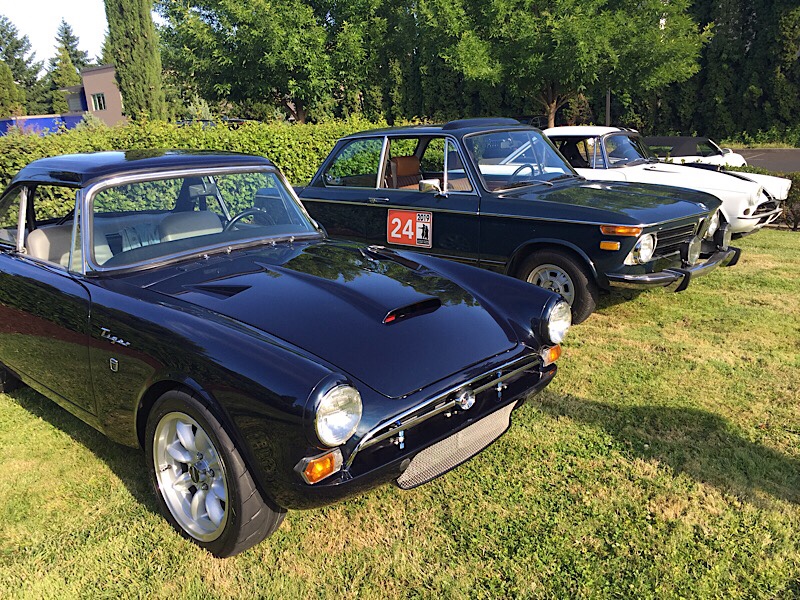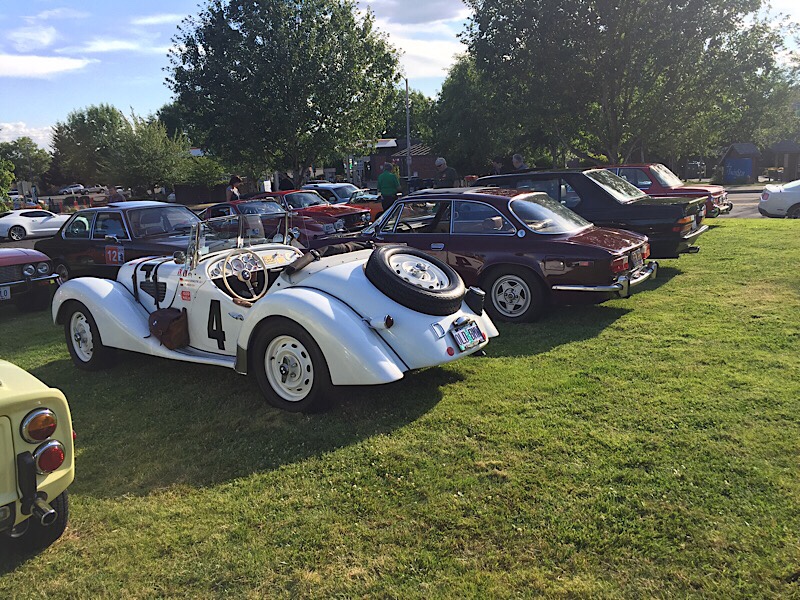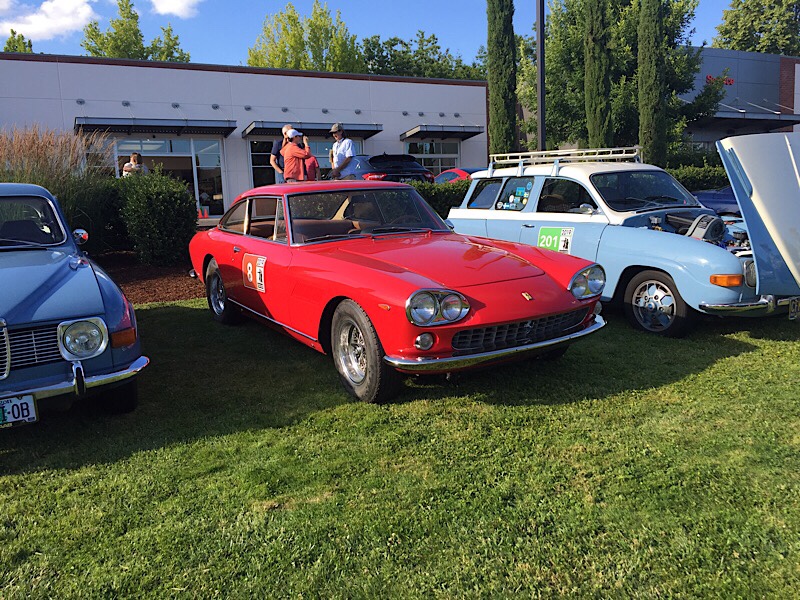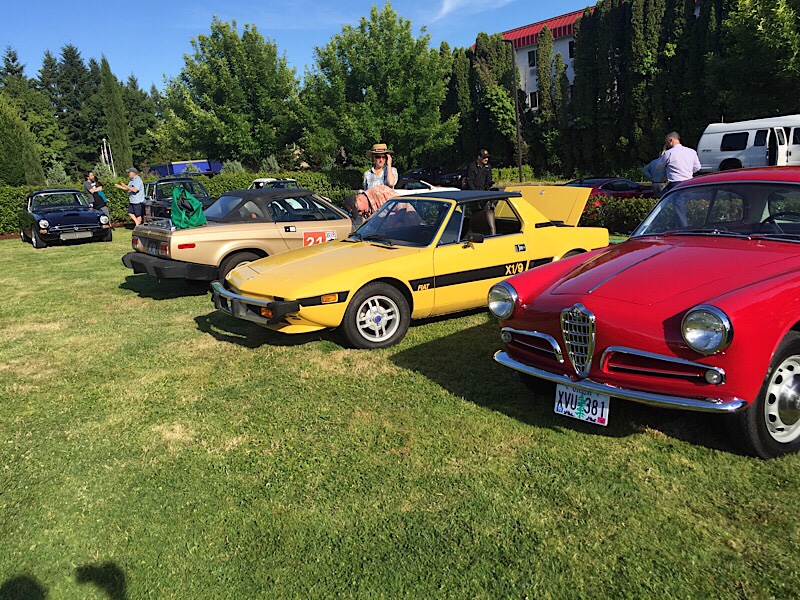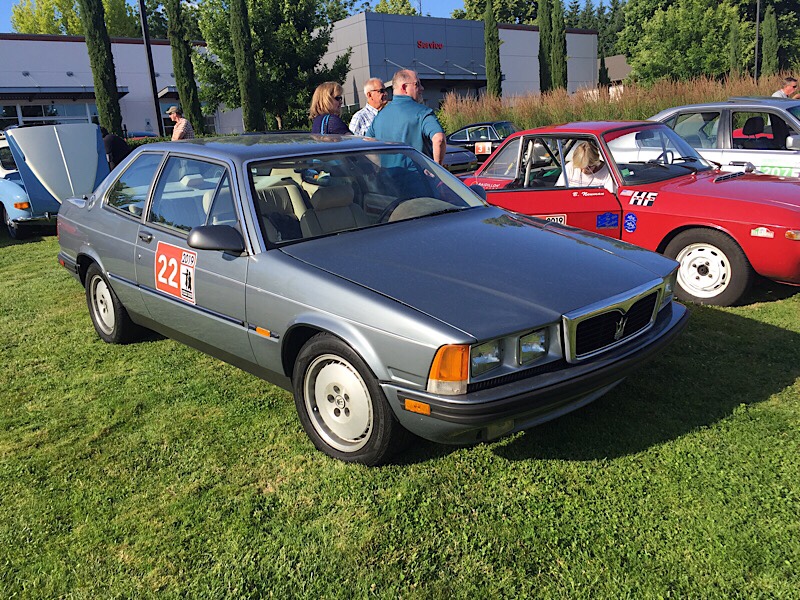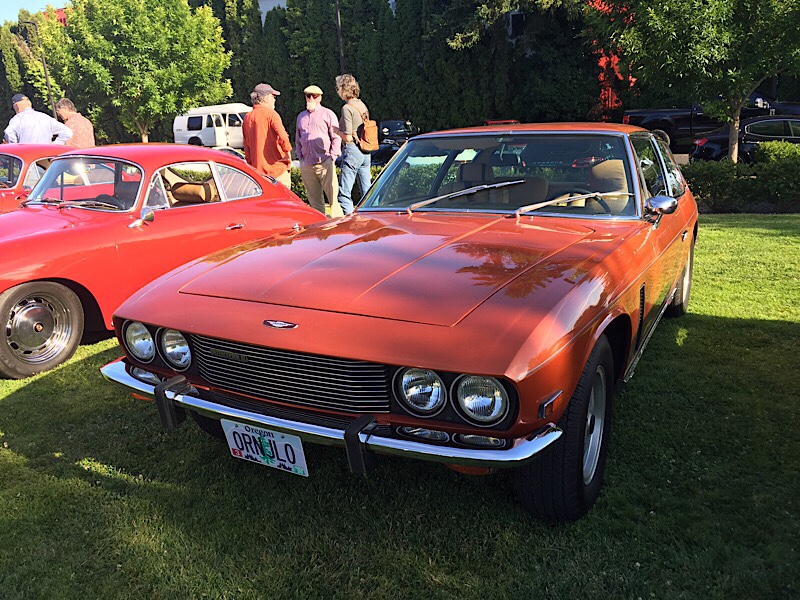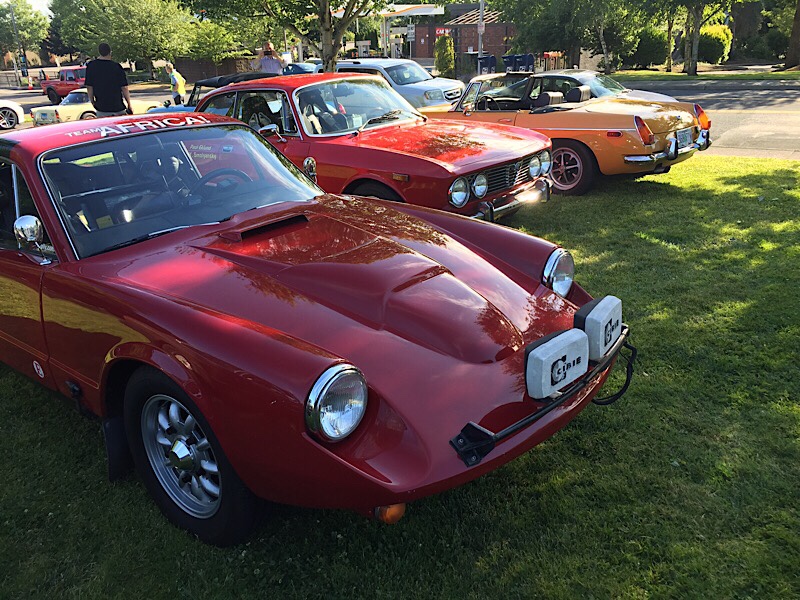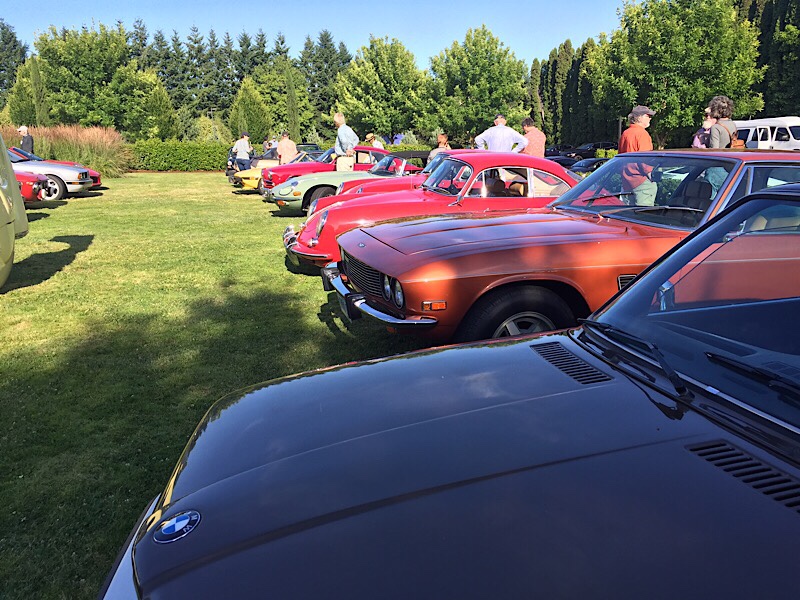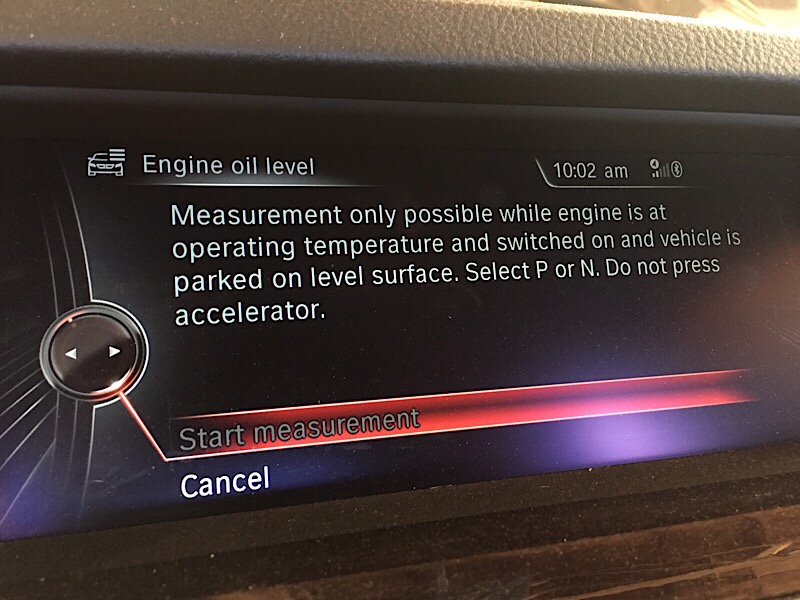
Engineering Idiocy. I know I’m late to this particular party, but I had not encountered this until today. Several years ago, after picking us up at the Houston airport, Linda was riding in the rear seat of my father’s BMW 535i, and casually said “Charlie, I love your car. If you ever think about selling it, I’ll buy it from you.”
Long story short, we bought the car from my mom not long after he passed away last summer. We drove it home last autumn, where it spent most of the winter parked in my shop as it isn’t really an ideal winter car. For that we drive her old Subaru.
This 5-series is several years old, but has very low miles. We literally doubled the odometer driving it from Texas to Oregon. It is likely overdue for an oil change in time more than distance. I looked up the oil required and bought two large jugs of it yesterday. I had stocked up on filters from BavAuto (R.I.P.) soon after we bought it. I opened the hood in the shop to be presented with…
NO DIPSTICK!
I recall lots of complaints in Roundel (the BMWCCA magazine) about this issue back when BMW started doing this, but I didn’t give it much thought.
So I was sort of stuck. The owners manual doesn’t list the engine oil capacity(!) and everything BMW presents you with basically says “bring it to the dealer for oil changes”… grrr.
I’ve been changing my own oil since I was a teenager. It was the first thing I learned about automotive maintenance. For me it is almost a therapeutic action. It is good for the car, it is good for me. I drive away with a sense of accomplishment and satisfaction. But now I’m just confused.
Thankfully I have the Internet. The Internet tells me I need 6.5 Liters of oil for this engine. Typical of how I’ve always done this I’ll fill it a bit short of what should be “full” and then top it off in small increments to avoid overfilling the engine.
However without a dipstick, there is no way to actually do this. To measure the engine oil you have to be in the car and use the onboard computer. Not only that, the car has to be on level ground, engine on, and UP TO OPERATING TEMPERATURE. ????
This is sort of stupid. I let the oil drain out overnight. The engine is cold. In fact it got below freezing last night, so the engine is about as cold as it will ever be. I feel stupid starting a cold engine with at least a half a liter short of the correct amount of oil… then letting it idle for long enough to warm it up.
The dipstick is a perfectly adequate tool for this task. It takes seconds to measure oil levels with a dipstick, and it poses ZERO risk to the engine to use it. While I’m not really scared of damaging this car, doing this for the first time ever does make me feel… mild trepidation mixed with annoyance for some engineers in Munich.
So here I KNOW I shorted the amount by 500ml, so I expect the car to tell me to add that after I perform the check…
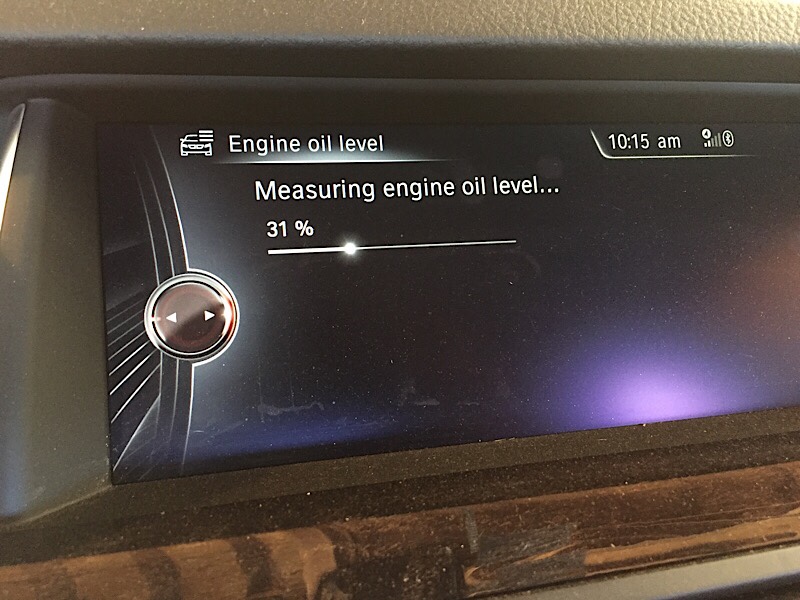
…and…
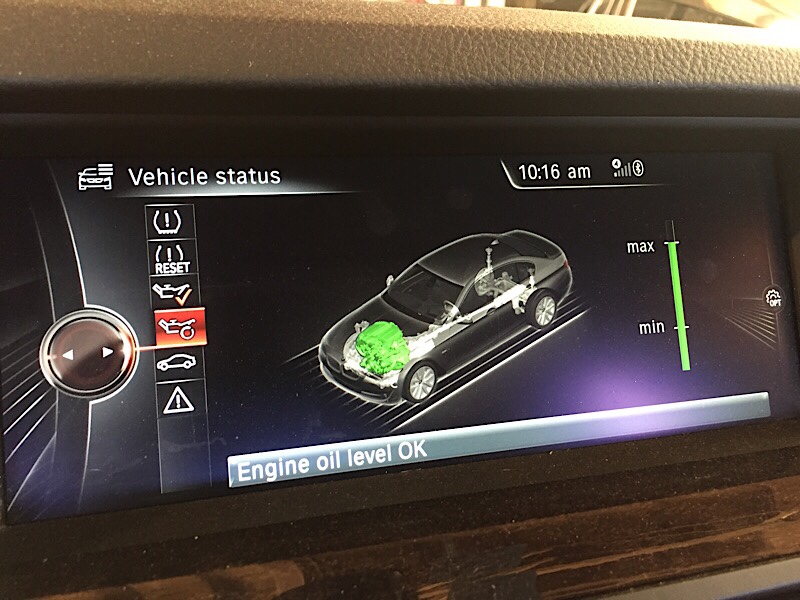
Now I’m REALLY annoyed. How can I trust this thing? It’s like those temperature gauges they program to stay right in the middle unless something really bad is happening. I know I’m 500ml short, but the car tells me “I’m at 100%” (note the lack of actual measuring units).
I guess I’m going to have to check often to see if it changes.
So happy that all the other engines I care for have dipsticks.
